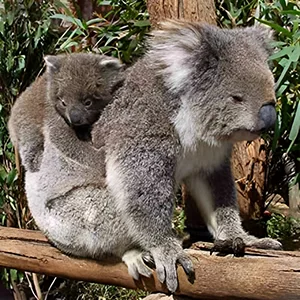
Koalas are adorable tree-dwelling marsupials, but did you know they have one of the most unusual reproductive systems in the animal kingdom? Male koalas have a large two-pronged penis, while female koalas have three vaginas, two uteruses, and carry their babies in a pouch. This unique anatomy supports their complex reproductive cycle and enhances their chances of successful breeding.
Male Koala's Unique Two-Pronged Penis
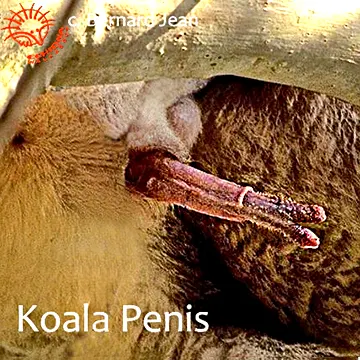
Photo: Male Koala's Two-pronged penis
Why Do Male Koalas Have Two Penises?
Male koalas have a long two-pronged penis, referred to as a bifurcated (split) penis, meaning tip of the koala's penis splits into two shafts, which correspond with the female’s two lateral vaginas enhancing successful fertilization. When not in use, the penis is safely tucked away inside its body in its cloaca.
Koalas Balls are Different Too
Curiously, unlike most mammals, the male koala's scrotum (balls) sits above its penis, rather than below it, and is held close to its body— in other words, it doesn't dangle. This unique adaptation is likely a result of the koala’s tree-climbing lifestyle and habit of sitting on its haunches for long periods of time.
Female Koala's 3 Vaginas & 2 Uteruses

Photo: Female Koala Reproductive Anatomy
Female koalas have three vaginas and two uteruses (see photo). The two outer vaginas carry sperm to the separate uteruses, while the central vagina serves as the birth canal. This arrangement allows koalas to conceive and carry multiple pregnancies in quick succession, increasing their reproductive success. The koala's pregnancy is short and efficient, lasting just 33-35 days. After birth, the underdeveloped joey (baby koala) crawls into its mother's pouch for further growth.
Note: Female placental mammals have only one uterus and one vagina.
Koala Sex: A Loud and Selective Process
Koalas mate between September and March. Males attract females with deep, bellowing calls—each unique to the individual. Interestingly, females avoid previous mates, choosing new partners each season to promote genetic diversity.
Koala mating takes place at night and is an intense, vocal event. The much larger male mounts the female from behind, inserting his bifurcated (two-pronged) penis into her cloaca to fertilize her eggs. Special chemicals in the male’s sperm trigger ovulation in the female, increasing the chances of fertilization.
Koala Birth: A Tiny, Jellybean-Sized Joey
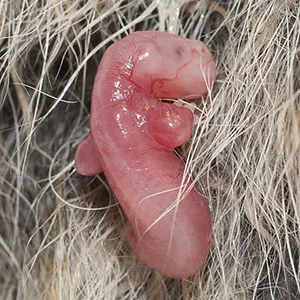
Photo: Joey crawling to pouch
Koala Birth Video
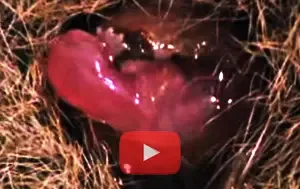
At birth, the newborn, called a 'joey', is tiny—about the size of a jelly bean and weighs about 0.5gms (0.02oz). It is blind, deaf, completely hairless, has tiny stumpy forelimbs and hardly a trace of its hind legs. However, even though it is still underdeveloped, the newborn joey has an excellent sense of direction and smell. Driven by instinct, using its tiny forelimbs in a swimming motion, the joey instinctively crawls to its mother's pouch. Once inside, it attaches itself onto one of its mother's teats and continues its growth for about another six months.
The Koala's Pouch: Nature’s Perfect Nursery
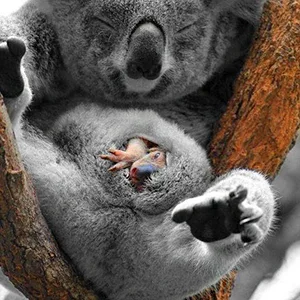
Photo: Koala joey in mother's pouch
The female koala’s pouch is located at the centre of the mother's abdomen and functions as an external womb. Nearly furless, lined with muscles and ligaments and with two nipples the pouch expands as the joey grows. The pouch's forward-facing opening has strong sphincter muscles to prevent to hold the the baby in and to prevent it from falling out as its mother climbs trees.
For about six months, the joey remains hidden inside the pouch, safely developing. Eventually, it peeks out to observe its surroundings before venturing out and riding on its mother’s back.
Interestingly, female koalas aren't born with pouches. They develop pouches only as they approach sexual maturity. On the other hand, male koalas do not have pouches at all. (But just for the record, male Tasmanian Tigers did.)